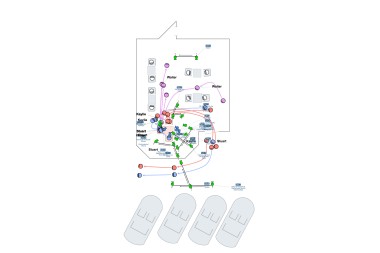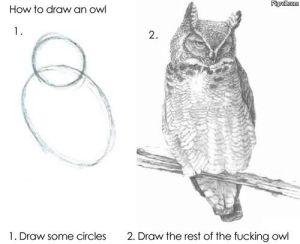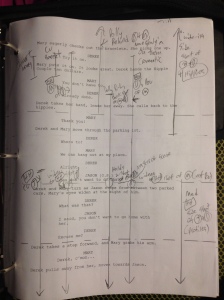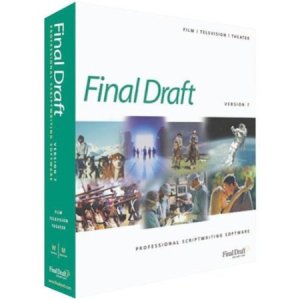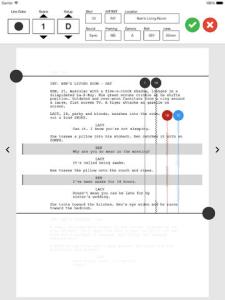Direct Approach
I’ve often trumpeted Shot Designer from the aspirationally-named, Vegas-based company “Hollywood Camera Work” as the best app I’ve ever found for directing. It runs on iOS, Android, Mac, and PC and helps me to generate really fast overheads for any scene, and plan out my shots and shotlists from there, and share them in a variety of useful ways. It even lets me schedule the order of my shots (although that’s more of a 1st AD thing, and I don’t really see a whole hell of a lot of apps out there for 1st AD’s). I really love this app, I use it on every shoot I ever direct.
But it’s not the only app of its kind – Cinemek Storyboard Composer is a neat way to generate relatively-simple shooting boards on one’s iOS device, and there are a bunch of great shotlist utilities, most notably Shot Lister.
Sidenote: if you specifically need storyboards and accuracy is important (and often it isn’t), there’s really no substitute for learning to draw. Or better yet, hire a professional storyboard artist like Anthony Liberatore for instance. Nothing summarizes it better than this:
Frankly, I’d rather spend 10 years in life drawing classes learning to be an illustrator than dick around endlessly with something like Frameforge 3D Studio (and don’t think I haven’t tried) trying to make something like my vision appear out of that half-a-loaf of a CGI program. Nothing like trying to be creative with your camera placement after 10 hours of building clunky virtual sets, rigging characters, and trying to use un-user-friendly posing tools on characters which flop around with a computer-generated dead weight.
Celtx, an aggressive young company gunning to be the go-to appiverse for top-to-bottom writing and preproduction has a few promising previz tools and a shotlisting utility within its writing app which allows the user to tag key words in the script and add shots in a separate box off to the side.
It’s not a bad idea – the best I’ve seen thus far – but if I may be so bold Celtx, I believe this utility is missing the point. And the point is touchy-feely.
Tactile Integration
That’s right, touching stuff. Making this process less like an analytical staring contest with a script like making a prop list, and more like a creative interaction, a tool for interpreting the script. Here, for instance, is the jumping-off point I currently use in order to turn a few thousand words into very few actual shots (from the script “Oblivion” – long before the Tom Cruise movie – written by megagenius Bob DeRosa):
In film school one of my teachers – I believe it might have been Ralph Clemente – introduced me to this technique which is a straight-up bastardization of what Script Supervisors do. Quite simply, while preparing for a shoot, you take the script and a pencil (or pen if you’re adventurous or don’t make any mistakes) and a ruler, and you draw lines on your script. Here’s how it works:
- Each line represents a single shot.
- Each line extends from the moment where you want the shot to start and stops where you want the shot to end (the arrows on my script indicate that they continue from page to page).
- Off to the side of each line, the director annotates what the shot is. Master shot? Steadicam? Handheld? Insert? How specific or how general is up to the individual director, but often dictated by how much blank space one has in the margins to write.
It’s simple, it’s a little fun, and I believe it does what every process in filmmaking should do – it forces one to meditate on the script and constantly ask one’s self, “what does the script ask for right here?”
One App To Do All of This
And so it was, in the spring of 2003, I first had the idea that a computer program could do all this. And I’m not a computer programmer, but I went ahead and wrote up the idea – a comprehensive program (what we called an App when it had to run on a bulky computer), and as a non-computer-programmer set out to find a home for this idea.
I called it “Vision,” and outlined an idea that began with drawing interactive lines onto a script in any word processor or PDF, and extrapolated from that a shotlist which was as detailed or basic as the director wanted it to be.
How it Would Work
Imagine this – you have a script, you click (or in the app world, tap) where you want a shot to start, zoom down through the script to where you want it to end. The line is editable, and when you click on it you get a world of options – Check boxes for the size of the shot (wide, medium, closeup, 2-shot, profile, etc.), text entry for what lens you might use. Style of movement (Sticks, Handheld, Steadicam, Dolly, Slider, Jib Arm, Crane, you-name-it), as well as any other director-ish stuff (reference photos, storyboards, color palette, speed of movement, etc.). Each of those lines becomes a shot in a shotlist, which might be all you need; but I had ideas about where this program could grow from there. I wanted to create ways to track a character’s arc through color and lensing right in there. That kind of stuff.
The shotlist generated by this script-centric process could be expanded into overheads (not unlike the Shot Designer overheads), and ultimately to a pre-Frameforge 3D application to build actual storyboards. This would all be done in a dynamically-connected script, now a step closer to unlocking the creative potential of the film. My problem – I don’t know shit about computer programming.
And it sure looks hard.
The furthest I got back then was to pitch the makers of Final Draft. They were at the time the only company I could think of which was focusing on the creative act of filmmaking. Maybe I should have pitched Movie Magic/Entertainment Partners, but my Final Draft meeting was somewhat disheartening and left me wondering if I was wasting my time thinking about what kind of software would benefit directors.
In a nutshell, what the very friendly and nice gentleman from Final Draft said to me was this: “How many directors are there who would actually buy this product?” You see, according to Final Draft-guy, there were tens of thousands of aspiring writers who wanted to buy their $250 software, but how many aspiring directors were there?
I pointed out that in addition to all the working pros in features, television, commercials, industrial video, and hobbyists – how many film schools there were, and that this could be something that every aspiring director in film school would very much want.
He countered that every individual director has a unique way they approach material and that there is no codified way to appeal to all of them. This is true, I countered, but many if not most of them start with a script and create shooting plans based mostly on what’s on the page. And again, I may have my own way of applying this technique but I sure as shit didn’t make it up.
Final Draft-man was unimpressed, and sent me on my merry way.
Then a few years later, Frameforge came out and I sincerely tried to make it my go-to application for previsualization, but there aren’t enough hours in the day to lay the foundation FF demands, before you get to the creative stuff.
Then a few years after that, the iPad was born, and it seemed like a promising platform to build something like this on. I mean, touching the actual script to do this seems like an equal-or-better way to do start than the ruler-and-pencil way I break down shots to this day.
Then film apps started popping up. Cinemek. Shot Lister. Shot Designer. Even Final Draft got into the app act a few years back and this idea seemed like an inevitability. But, alas, nobody has yet to create the tactile interactive script breakdown tool. And I’ve brought it up to a few of the companies listed above. One suggested I use a script supervision app called “Script Lines.”
That app is a start, but it’s not designed for directors. This thing should be a creative tool, not an analytic report. Directing, and especially the act of creatively breaking apart something like a script to shoot it, needs to be an act of expression and not executing a checklist. It’s a dynamic and creative process and should be treated as such.
I feel like if I was more of a salesman, I could sell this. The merits to me are quite clear. But I’d rather be a filmmaker than a salesman (if only sales wasn’t a huge part of being a filmmaker – a topic for another post…), and I want to see this thing exist.
So… Wanna Make It?
Is this a “million dollar idea?” No idea. Maybe in 2003 if Final Draft had decided that directors were a market worth selling stuff to, it might have been the first to market – and it could also suffer from the bloat, unremarkable updating process, and high price still associated with FD.
As of now, a lot of the tools – except this most important and script-driven one in my opinion – already exist and many of them tend to languish without updates for long periods of time, so maybe FD was right and people don’t want this. Or maybe they’re all missing this simple link. And simplicity is the key, along with scalability. What I continue to love about Shot Designer is how within 10 minutes of ever hearing of the app, anyone can sit down and start using it. I’d like to see that happen here. Does anyone else want to see it happen now?
I know there are some filmmakers who also design apps out there. Like Stu Maschwitz or John August, both of whom create software for niche user groups at a reasonable price. Maybe I need to be more pushy with this concept, whose time has come.
If this actually reaches anyone in the app-development world and you have any desire to discuss this concept, reach out to me. If you decide to steal it, please let me know – I’d like to be on the beta team or even consult in its creation. If anyone actually wants to partner on this, I’m all ears and would love to see this thing in the world.
Whether it’s something that is bound to make lots of money or not, 11 years later I still believe there’s a market for it, that there’s value in it, and that it’s an inevitability. Wanna make it happen?
